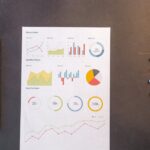Mastering Instagram Ads Targeting for Higher ROI
Achieving a superior return on investment (ROI) from Instagram advertising hinges almost entirely on the precision and strategic depth of your targeting. Instagram, as a cornerstone of Meta’s advertising ecosystem, offers an unparalleled suite of tools that, when wielded expertly, can connect your brand with the most receptive audiences. This comprehensive guide delves into the intricate layers of Instagram ads targeting, dissecting each component to empower advertisers to move beyond basic demographic segmentation towards sophisticated, data-driven audience selection. The objective is not merely to reach people, but to reach the right people, at the right time, with the right message, maximizing the efficiency of every ad dollar spent.
Understanding the Core of Instagram Ad Targeting: The Audience Network
At its heart, Instagram’s advertising platform leverages Meta’s vast data reservoir, allowing advertisers to define audiences based on a multitude of attributes. This isn’t just about Instagram users; it encompasses data from Facebook, Messenger, and Meta’s Audience Network partners, providing a holistic view of user behavior, preferences, and demographics. The power lies in the ability to combine these data points, creating highly granular audience segments that resonate deeply with specific campaign objectives. Before diving into specific targeting types, it’s crucial to grasp that every decision in audience building impacts ad delivery, cost-per-result, and ultimately, your campaign’s profitability. Effective targeting minimizes wasted impressions, reduces ad fatigue among irrelevant segments, and concentrates your budget on those most likely to convert.
Fundamental Targeting Categories: Building Your Base
The journey to advanced targeting begins with a solid understanding and meticulous application of the core targeting categories available within Ads Manager. These form the bedrock upon which more complex strategies are built.
1. Location Targeting: Pinpointing Your Geographical Footprint
Location targeting is fundamental for businesses with a physical presence or those serving specific geographical regions. It allows advertisers to reach people based on their current location, recently visited locations, or even their declared home location.
- Countries, Regions, States, Cities: Standard geographical filters. Crucial for international brands segmenting by market or local businesses serving metropolitan areas.
- Postal Codes/ZIP Codes: For hyper-local targeting, invaluable for brick-and-mortar stores, service areas, or community-specific campaigns.
- Radius Targeting: Define a specific radius around a particular address (e.g., 5-50 miles). This is exceptionally powerful for local businesses like restaurants, retail stores, or service providers operating within a defined catchment area. Consider foot traffic patterns and travel willingness when setting the radius.
- Exclusion Targeting: Just as important as inclusion. If your business doesn’t serve certain areas, excluding them prevents wasted impressions. For instance, a delivery service might exclude areas outside its operational zone.
- Behavioral Location Targeting: Instagram also offers options like targeting people “living in” a location, “recently in” a location, or “traveling in” a location.
- “People living in this location”: Ideal for long-term residents, local services, or community engagement.
- “People recently in this location”: Useful for tourists, event attendees, or capturing immediate interest from visitors.
- “People traveling in this location”: Targets those whose primary residence is far away, valuable for travel industries, hotels, or destination-specific promotions.
- “People who have recently visited this location”: A nuanced option for re-engaging those who were recently physically present.
2. Demographic Targeting: Defining Your Audience by Core Traits
Demographic targeting allows you to refine audiences based on personal attributes, which often correlate strongly with consumer needs and purchasing power.
- Age: Critical for products and services with a defined age range (e.g., toys for children, retirement planning for seniors). Instagram’s user base skews younger, making precise age segmentation vital for reaching specific generations. Always align age with product relevance and legal advertising requirements.
- Gender: Relevant for gender-specific products (e.g., cosmetics, apparel). Be mindful of gender fluidity and inclusive marketing practices; not all products truly require strict gender segmentation.
- Languages: Essential for multi-lingual campaigns or targeting specific linguistic communities within a broader geographical area. Do not assume language based on location; many countries are multilingual.
- Education: Targeting based on educational attainment (e.g., high school, college degree, master’s degree) can be effective for academic institutions, professional development programs, or products appealing to specific intellectual levels.
- Relationship Status: Useful for targeting specific life stages (e.g., “Engaged” for wedding services, “Married” for home improvement, “Single” for dating apps).
- Work (Job Titles, Industries, Employers): Highly valuable for B2B marketers, recruiters, or products/services catering to specific professions. Targeting by industry or job function allows you to reach decision-makers or employees within relevant sectors. This leverages LinkedIn integration and declared work information.
- Parental Status: Crucial for baby products, family services, educational tools, or any offering catering to parents at different stages (e.g., “New Parents,” “Parents with Preschoolers”).
3. Interest Targeting: Connecting with Passions and Hobbies
Interest targeting is where Instagram’s data-rich environment truly shines. It allows you to reach users based on their expressed interests, hobbies, pages they follow, and content they engage with across Meta’s platforms.
- Broad Interests vs. Niche Interests:
- Broad Interests: (e.g., “Sports,” “Fashion,” “Technology”) can provide a large audience but may lead to lower relevance. Useful for initial audience exploration or brand awareness campaigns for widely appealing products.
- Niche Interests: (e.g., “Vegan Cooking,” “Indie Rock Music,” “Sustainable Fashion”) allow for highly specific targeting, leading to higher engagement and conversion rates because you’re reaching highly motivated individuals.
- Layering Interests: The real power comes from layering multiple interests using “AND” logic. For example, instead of just “Fitness,” you could target “Fitness” AND “Healthy Eating” AND “Yoga.” This creates a more defined, engaged segment. Avoid layering too many interests if it shrinks your audience size too much, unless your product is extremely niche.
- Behavioral Interests: Beyond declared interests, Instagram infers interests from user behavior – pages liked, posts interacted with, videos watched, ads clicked, and even off-platform browsing behavior via the Meta Pixel. This often provides more accurate insights into genuine interests than self-declared ones.
- Competitor Interests: Consider targeting the interests associated with your competitors’ audiences or the brands they follow. While you can’t directly target “Followers of X Brand,” you can often infer their interests (e.g., if a competitor sells high-end coffee, target “Specialty Coffee,” “Coffee Roasting,” “Barista Culture”).
- Category Exploration: Ads Manager offers interest categories to browse (e.g., “Business & Industry,” “Entertainment,” “Shopping & Fashion”). Explore these to discover relevant, granular interests you might not have considered.
4. Behavior Targeting: Understanding Online and Offline Actions
Behavioral targeting goes beyond what people say they like, focusing on what they do. This data is highly indicative of intent and lifestyle.
- Purchase Behavior: Targets users based on their past purchasing habits, such as online shopping frequency, type of products purchased, or even specific purchase events (e.g., “Engaged Shoppers” for those who frequently click “Shop Now” buttons).
- Digital Activities: Targets users based on their online behavior, including device usage (e.g., “mobile device users,” “console gamers”), browser history, or engagement with specific types of content (e.g., “small business owners”).
- Travel Behavior: Identifies frequent travelers, commuters, or those interested in specific travel destinations. Useful for travel agencies, airlines, hotels, or destination marketing organizations.
- Anniversaries & Life Events: Targets users approaching significant life events (e.g., “Friends of People with an Anniversary in 61-90 Days,” “Newly Engaged”). Extremely powerful for gift-related products, event services, or commemorative items.
- Financial Behaviors: In some regions, limited financial indicators may be available, though these are heavily restricted due to privacy concerns.
- Offline Activity: If you integrate offline conversions (e.g., through CRM uploads or point-of-sale data), you can target users who have exhibited specific offline behaviors.
Advanced Targeting Strategies: Elevating Your Campaign Performance
Once you’ve mastered the foundational categories, it’s time to leverage Instagram’s most powerful targeting tools: Custom Audiences and Lookalike Audiences. These strategies allow for hyper-personalization and highly efficient scaling.
1. Custom Audiences: Re-engaging Your Existing Connections
Custom Audiences allow you to target people who have already interacted with your business, either online or offline. This is the cornerstone of effective retargeting and relationship nurturing. The principle is simple: it’s far easier and cheaper to convert someone who already knows your brand than a cold prospect.
-
Website Traffic Custom Audiences:
- Source: Meta Pixel or Conversions API.
- Functionality: Create audiences based on specific actions taken on your website.
- Types:
- All Website Visitors: Anyone who loaded any page of your website. Good for broad retargeting or brand recall.
- Visitors by Time Spent: Target the top X% (e.g., 5%, 10%, 25%) of visitors by time spent on site. These are your most engaged visitors.
- Visitors of Specific Web Pages: Target people who visited particular product pages, service pages, blog posts, or landing pages. Ideal for product-specific retargeting (e.g., someone viewed a shoe, show them an ad for that shoe).
- Visitors by Event: Target users who triggered specific Pixel events (e.g., “ViewContent,” “AddToCart,” “InitiateCheckout,” “Purchase,” “Lead”). This is crucial for funnel-based retargeting.
- Exclusions: Exclude those who have already purchased or completed a desired action to avoid wasteful spending and ad fatigue.
- Retention Window: Define how long a user stays in the audience (e.g., 30 days, 90 days, 180 days). Adjust based on your sales cycle length.
- Setup: Requires the Meta Pixel correctly installed and configured with standard and custom events.
-
Customer List Custom Audiences:
- Source: Upload a CSV file of your customer data.
- Functionality: Match your customer emails, phone numbers, first names, last names, cities, states, countries, postal codes, and external IDs to Meta profiles.
- Use Cases:
- Existing Customer Engagement: Offer loyalty programs, cross-sell/upsell new products, announce sales.
- Win-Back Campaigns: Target dormant customers with special offers.
- Exclusion: Exclude existing customers from acquisition campaigns to avoid advertising to those who’ve already bought.
- High-Value Customers: Segment your customer list to target only your most profitable customers for exclusive promotions.
- Data Matching: Higher data points in your CSV (e.g., email and phone and name) lead to higher match rates. Ensure data is clean and consistently formatted. Always prioritize data privacy and consent.
-
App Activity Custom Audiences:
- Source: Meta SDK integrated into your mobile app.
- Functionality: Target users based on their interactions within your app (e.g., app opens, level completions, in-app purchases, specific feature usage).
- Use Cases: Re-engage dormant users, promote new features, offer in-app purchases, or target users who’ve completed certain milestones.
-
Instagram Engagement Custom Audiences:
- Source: Your Instagram Business Profile.
- Functionality: Target people who have interacted with your Instagram content or profile.
- Types:
- Everyone who engaged with your professional account: Broad engagement (likes, comments, shares, saves, profile visits).
- Anyone who visited your professional account profile: Those who explicitly navigated to your profile.
- People who engaged with any post or ad: Engaged with specific content.
- People who sent a message to your professional account: High-intent engagement.
- People who saved any post or ad: Indicates strong interest or intent for future reference.
- Retention Window: Similar to website audiences, define the time frame for engagement.
- Value: These are warmer audiences than cold prospects, showing inherent interest in your brand. Great for moving them further down the funnel.
-
Facebook Page Engagement Custom Audiences:
- Source: Your Facebook Page.
- Functionality: Similar to Instagram engagement, target users based on their interactions with your Facebook Page content, ads, or profile.
- Value: Allows for cross-platform retargeting, leveraging engagement data from both primary Meta platforms.
-
Video Views Custom Audiences:
- Source: Videos uploaded to your Instagram or Facebook pages, or used in ads.
- Functionality: Target people who have watched a certain percentage of your videos (e.g., 3 seconds, 10 seconds, 25%, 50%, 75%, 95%).
- Value: Highly effective for nurturing leads. Someone who watched 75% of your product demo video is a much hotter lead than someone who saw it for 3 seconds. Allows for sequential storytelling ads: show a short video to a broad audience, then retarget those who watched 50%+ with a longer, more detailed video or a direct offer.
-
Lead Form Custom Audiences:
- Source: People who opened or completed a lead form on Instagram/Facebook.
- Functionality: Target users who interacted with your Instant Forms.
- Use Cases: Retarget those who opened but didn’t complete a form (high intent, minor friction), or nurture those who completed a form (if lead nurturing happens outside the ad platform).
-
Instant Experience Custom Audiences:
- Source: People who opened or interacted with your Instant Experience (formerly Canvas) ads.
- Functionality: Target users based on their engagement with immersive full-screen ad experiences.
- Value: Indicates a deeper level of curiosity and engagement, useful for follow-up campaigns.
-
Offline Activity Custom Audiences:
- Source: Upload data from in-store purchases, phone calls, or other offline interactions.
- Functionality: Connect online ad campaigns to real-world customer behavior.
- Value: Crucial for businesses with a significant offline component, enabling truly integrated marketing campaigns.
2. Lookalike Audiences: Expanding Your Reach with Precision
Lookalike Audiences are arguably the most powerful scaling tool in the Instagram Ads arsenal. Once you have a high-quality Custom Audience (your “seed audience”), Meta’s algorithm identifies other users on the platform who share similar demographic, interest, and behavioral characteristics. This allows you to reach new prospects who are statistically likely to be interested in your product or service, without the guesswork of traditional interest targeting.
-
The Seed Audience is Key: The quality and size of your seed audience directly impact the effectiveness of your Lookalike Audience.
- High-Quality Seeds: Aim for seed audiences representing your best customers or most engaged users.
- Website visitors who completed a purchase.
- Customers who have made multiple purchases or have a high lifetime value.
- Users who watched 75-95% of your video ads.
- People who submitted a lead form.
- The top X% of website visitors by time spent.
- Minimum Size: Meta recommends a seed audience of at least 1,000 people, but 5,000-10,000 (or even more) will yield much better results. The more data Meta has to analyze, the more accurate the Lookalike audience will be.
- Homogeneity: A seed audience that is too diverse can lead to a less focused Lookalike audience. If you have distinct customer segments, create separate Custom Audiences for each and generate Lookalikes from them. For example, create a Lookalike from high-value female customers and another from high-value male customers if your product appeals differently to each.
- High-Quality Seeds: Aim for seed audiences representing your best customers or most engaged users.
-
Lookalike Percentage:
- When creating a Lookalike audience, you select a percentage (1% to 10%) of the total population in your target country.
- 1% Lookalike: This is the most similar to your seed audience, offering the highest relevance but the smallest audience size. Ideal for direct response campaigns or when scaling conservatively.
- 2-5% Lookalike: Broader reach, slightly less similar but still highly relevant. Good for expanding successful campaigns.
- 6-10% Lookalike: The broadest reach, least similar. Use with caution, typically for brand awareness campaigns or when exhausting smaller Lookalikes.
- Testing: It’s common practice to test different Lookalike percentages to find the sweet spot between reach and relevance for your specific campaign.
-
Creating Lookalike Audiences:
- Navigate to Audiences in Ads Manager.
- Click “Create Audience” and select “Lookalike Audience.”
- Choose your source Custom Audience.
- Select the country/region for your Lookalike.
- Choose your desired audience size percentage.
- Meta will then generate the Lookalike audience. This can take some time.
-
Exclusion for Efficiency: Always exclude your original Custom Audience (the seed audience and any related retargeting audiences) from your Lookalike campaigns. This prevents showing the same ad to people who are already customers or already in a retargeting funnel, avoiding wasted ad spend and ensuring a fresh audience for your Lookalike efforts.
Retargeting Mastery: Guiding Users Down the Funnel
Retargeting is the art and science of showing ads to people who have already interacted with your brand. It’s about nurturing intent and overcoming objections. A well-structured retargeting strategy segments users by their level of engagement and delivers tailored messages at each stage.
- Funnel-Based Retargeting:
- Top of Funnel (Awareness/Interest):
- Audience: Website visitors (broad), video viewers (3-10 seconds), Instagram/Facebook post engagers.
- Goal: Re-engage, provide more information, build trust.
- Content: Educational content, brand story, testimonials, deeper dive videos. Not a hard sell.
- Middle of Funnel (Consideration):
- Audience: Website visitors of specific product/service pages, video viewers (50%+), lead form openers (not submitters), Instant Experience engagers.
- Goal: Drive specific action (e.g., add to cart, sign up for a demo, download a guide).
- Content: Product benefits, case studies, feature highlights, special offers (discounts, free shipping).
- Bottom of Funnel (Conversion):
- Audience: Abandoned cart users, initiated checkout but didn’t purchase, previous lead form submitters, highly engaged website visitors (e.g., 90-day purchase page visitors), high-value website time-spenders.
- Goal: Close the sale.
- Content: Urgency (limited-time offers), scarcity (low stock), stronger discounts, last-chance incentives, robust social proof (reviews, testimonials).
- Top of Funnel (Awareness/Interest):
- Dynamic Retargeting (Dynamic Product Ads – DPAs):
- Functionality: Show users ads for the exact products they viewed on your website but didn’t purchase. This requires a product catalog (or feed) uploaded to Meta Business Manager and your Meta Pixel configured to pass product IDs and view/add-to-cart/purchase events.
- Power: Highly personalized, extremely effective for e-commerce. It mimics the in-store experience of a salesperson reminding you of what you liked.
- Implementation: Create a “Catalog Sales” campaign objective.
- Cross-Platform Retargeting: Leverage engagement data from Facebook to retarget on Instagram and vice versa. Someone who engaged with your Facebook post might be more receptive to an Instagram ad.
- Frequency Capping: Be mindful of ad fatigue. Set frequency caps (e.g., 2-3 impressions per person per week) for retargeting campaigns to avoid annoying users, especially for longer sales cycles.
Audience Insights and Research: Fueling Your Targeting Strategy
Effective targeting is not static; it requires continuous research and refinement. Instagram Ads Manager provides tools and external resources that can help you understand your audience better.
-
Facebook Audience Insights:
- Functionality: This powerful tool (accessible from Ads Manager) provides aggregated and anonymized data about people connected to your Page or a Custom Audience you create. You can explore demographics, interests, behaviors, purchase activity, and even lifestyle details.
- Use Cases:
- Discover New Interests: Input a known interest, and Audience Insights will suggest related interests, categories, and Pages liked by that audience. This can uncover new targeting opportunities.
- Validate Assumptions: Verify if your perceived target audience actually aligns with the data.
- Demographic Deep Dive: Understand age distribution, gender split, relationship status, and education levels of potential or existing customers.
- Lifestyle & Behavior: Learn about their device usage, purchase behavior, and other online activities.
- Geographical Analysis: See where your audience is concentrated.
- Limitations: Data is aggregated and doesn’t reveal individual user data. Some data points might be limited by privacy regulations or data availability.
-
Google Analytics (or other web analytics tools):
- Complementary Data: While not directly for Instagram targeting, GA provides invaluable insights into website user behavior: bounce rate, time on site, conversion paths, top pages, traffic sources, and demographics of your website visitors. This data can inform your Custom Audience creation and broader targeting strategy.
-
Customer Surveys and Interviews:
- Qualitative Data: Directly ask your customers about their demographics, interests, pain points, what motivated their purchase, where they spend time online, and what other brands they follow. This qualitative data is gold for shaping ad copy and targeting.
-
Competitor Analysis:
- Inference, Not Direct Targeting: While you can’t directly target competitor followers, you can infer the interests and behaviors of their audience.
- Tools: Use tools like SimilarWeb, BuzzSumo, or even manual review of competitor’s Instagram accounts to see what content performs well, what hashtags they use, and who engages with them. This helps identify common interests.
-
Social Listening Tools:
- Discover Conversations: Monitor online conversations around your brand, industry, and competitors. Identify pain points, popular topics, and emerging trends that can inform interest-based targeting or even new product development.
-
Internal CRM Data:
- Customer Segmentation: Segment your customer database by lifetime value (LTV), purchase frequency, product purchased, or demographics. This highly valuable data directly informs the creation of effective Customer List Custom Audiences and their Lookalikes.
Testing, Optimization, and Scaling: The Iterative Process
Targeting is not a “set it and forget it” activity. It’s an ongoing process of testing, analyzing, optimizing, and scaling.
1. A/B Testing (Split Testing):
- Principle: Test one variable at a time (e.g., two different audiences, two different ad creatives, two different bidding strategies) to determine which performs better.
- Audience Split Testing:
- Hypothesis: Formulate a hypothesis (e.g., “Lookalike Audience A will perform better than Lookalike Audience B for purchases”).
- Setup: Create duplicate ad sets, with each targeting a different audience, but keeping all other variables (ad creative, budget, placement, optimization goal) identical.
- Duration: Run tests long enough to gather statistically significant data (typically a few days to a week, depending on budget and conversion volume).
- Analysis: Focus on your primary KPI (e.g., Cost Per Purchase, Cost Per Lead, ROI).
- Iterative Refinement: Once a winner is identified, scale it. Then, test another variable against the winner. This continuous cycle leads to compounding improvements.
2. Monitoring Key Performance Indicators (KPIs):
- Relevance Score/Quality Ranking: Meta’s internal metric that gauges how well your ad resonates with its audience. A low score indicates poor targeting or ad creative.
- Click-Through Rate (CTR): High CTR suggests your ad copy and creative are compelling and your targeting is accurate.
- Cost Per Click (CPC) / Cost Per Mille (CPM): Lower costs indicate efficient ad delivery to a receptive audience.
- Conversion Rate: The percentage of people who complete your desired action. This is the ultimate measure of targeting effectiveness.
- Cost Per Acquisition (CPA) / Cost Per Lead (CPL): Your true cost to acquire a customer or lead. This must be sustainable and below your customer lifetime value (CLTV).
- Return on Ad Spend (ROAS): The most direct measure of profitability, indicating how much revenue you generate for every dollar spent on ads.
3. Ad Fatigue Management:
- Definition: When an audience sees the same ad too many times, leading to diminishing returns, increased costs, and negative feedback.
- Indicators: Declining CTR, increasing CPC/CPM, decreasing conversion rates, rise in negative comments.
- Solutions:
- Rotate Ad Creatives: Introduce new visuals and copy frequently.
- Broaden Audience: If your audience is too small, expand it slightly or combine with other relevant segments.
- Refresh Custom Audiences: Ensure your Custom Audiences are updated and dynamic.
- Implement Frequency Caps: Limit how many times a user sees your ad within a given period.
- Shift Targeting: Temporarily pause campaigns for a fatigued audience and focus on new ones, then re-engage the fatigued audience with fresh ads later.
4. Scaling Strategies:
- Vertical Scaling (Budget Increase): Gradually increase your budget on winning ad sets. Do not drastically increase it overnight, as this can destabilize performance. Incremental increases (e.g., 10-20% every 2-3 days) allow Meta’s algorithm to adapt.
- Horizontal Scaling (Audience Expansion):
- New Lookalikes: Create more Lookalike Audiences from different seed audiences or at different percentages (e.g., 2% or 3% from your best customers).
- New Interest Combos: Develop new layered interest audiences.
- Expand Geographies: If applicable, expand location targeting.
- New Custom Audiences: Implement new Custom Audience segments (e.g., video viewers of a new long-form content piece).
- Diversify Ad Creatives: As you scale, ensure you have a robust library of diverse ad creatives to prevent creative fatigue. Different creatives resonate with different audience segments.
Campaign Structure for Targeting Success
The way you structure your campaigns in Ads Manager directly impacts your ability to optimize targeting.
- Campaign Objective First: Always start by choosing the correct campaign objective (e.g., Conversions, Lead Generation, Traffic, Brand Awareness). This dictates the optimization goal for Meta’s algorithm and influences which targeting options are most effective.
- Ad Set Level Targeting: Targeting is primarily defined at the ad set level. This means each ad set can target a unique audience segment.
- Segment Your Audiences: Avoid lumping all your targeting into one ad set.
- Example Structure:
- Campaign 1: Conversions (Purchases)
- Ad Set 1: Lookalike Audience (1% Purchasers)
- Ad Set 2: Retargeting (Abandoned Carts)
- Ad Set 3: Interest-based (Layered, Niche)
- Campaign 2: Lead Generation
- Ad Set 1: Lookalike Audience (1% Lead Submitters)
- Ad Set 2: Retargeting (Lead Form Openers)
- Ad Set 3: Broad Interest (Top of Funnel)
- Campaign 1: Conversions (Purchases)
- Example Structure:
- Budget Allocation: Allocate budgets strategically at the ad set level. If one audience performs significantly better, shift more budget towards it. Consider using Campaign Budget Optimization (CBO) to let Meta distribute budget across ad sets based on performance.
- Placement Strategy: While Instagram is the primary focus, consider how other Meta placements (Facebook, Messenger, Audience Network) might complement your Instagram targeting. For instance, a video ad might perform better on Facebook feed, while a story ad on Instagram. If your targeting is very specific to Instagram’s visual nature, ensure you select Instagram-only placements. However, for maximum reach and lower CPMs, automatic placements are often recommended, allowing Meta to deliver where performance is optimal.
Common Pitfalls and How to Avoid Them
Even experienced advertisers can fall into common targeting traps. Awareness of these pitfalls is the first step to avoiding them.
- Too Broad or Too Niche Audiences:
- Broad: Can lead to wasted spend and low relevance.
- Niche: Can limit reach and prevent scaling.
- Solution: Balance; use layering to refine broad interests, and use Lookalikes to expand niche Custom Audiences.
- Neglecting Exclusions: Failing to exclude existing customers or users who have already converted leads to wasted ad spend and negative sentiment. Always exclude relevant Custom Audiences.
- Not Refreshing Audiences (Ad Fatigue): Running the same ads to the same audience for too long.
- Solution: Regularly check frequency metrics, rotate creatives, and expand/refresh audiences.
- Relying Solely on Interest Targeting: While foundational, interest targeting alone is often insufficient for high ROI.
- Solution: Integrate Custom Audiences, Lookalikes, and behavioral targeting for superior results.
- Ignoring Audience Insights: Not leveraging available data to understand your audience better.
- Solution: Regularly use Facebook Audience Insights and your internal analytics to inform targeting decisions.
- Assuming Audience Overlap: Just because two audiences seem similar doesn’t mean they don’t overlap. Test for audience overlap in Ads Manager before running campaigns, especially for Lookalikes, to avoid self-competition.
- Not Testing and Optimizing: Launching campaigns and expecting immediate, perfect results without continuous refinement.
- Solution: Embrace A/B testing as a core strategy.
- Ignoring the Pixel/Conversions API Setup: Without proper tracking, you can’t build effective website-based Custom Audiences or accurately measure conversions.
- Solution: Prioritize correct Pixel/Conversions API installation and event configuration.
Ethical Considerations and Privacy in Targeting
As targeting capabilities become more sophisticated, ethical considerations and user privacy grow in importance.
- Data Privacy Regulations (GDPR, CCPA): Ensure your data collection and usage practices comply with relevant regulations. This includes obtaining explicit consent for data tracking and usage, especially when uploading customer lists. Transparency with users about data collection is paramount.
- Ad Nausea/Creepiness: Overly aggressive retargeting or showing ads that feel too intrusive can backfire, leading to negative brand perception. Balance personalization with user comfort. Frequency capping helps here.
- Discriminatory Practices: Avoid targeting or excluding groups in a way that could be perceived as discriminatory (e.g., excluding certain demographics for housing or employment ads). Meta has specific policies against this. Be mindful of special ad categories for housing, employment, and credit, which have restricted targeting options to prevent discrimination.
- Transparency: Be transparent about your data practices. A clear privacy policy on your website is essential.
- Algorithmic Bias: Be aware that algorithms, while powerful, can sometimes inherit biases present in the data they are trained on. Continuously monitor your campaign performance across different demographics to ensure equitable ad delivery.
Future Trends in Instagram Ad Targeting
The landscape of digital advertising is constantly evolving. Staying ahead means anticipating future trends.
- Increased Focus on First-Party Data: With stricter privacy regulations and changes to third-party cookies (like Apple’s ATT framework), first-party data (data you collect directly from your customers/website visitors) will become even more critical for Custom Audiences and Lookalike modeling. Invest in robust CRM systems, email list building, and Conversions API implementation.
- AI and Machine Learning for Audience Discovery: Meta’s Advantage+ campaign tools (formerly Automated App Ads, Shopping Ads) already leverage AI to automate audience targeting, creative optimization, and budget allocation. Expect more sophisticated AI-driven solutions that can identify high-performing audiences with less manual intervention. This moves the advertiser’s role towards providing high-quality inputs (creatives, first-party data) and defining clear objectives.
- Contextual Targeting Resurgence: As behavioral targeting faces privacy challenges, contextual targeting (placing ads alongside content relevant to the product) might see a resurgence, though perhaps in more sophisticated, AI-driven forms on social platforms.
- Augmented Reality (AR) and Immersive Experiences: As AR features become more prevalent on Instagram (e.g., AR filters, try-on features), targeting might evolve to include users who interact with specific AR experiences, indicating interest in certain product categories or virtual try-ons.
- Creator Economy Integration: Targeting audiences based on their engagement with specific creators or types of creator content will likely become more refined, bridging influencer marketing with direct ad campaigns.
- Privacy-Enhancing Technologies (PETs): Meta and other platforms are investing in PETs to allow for effective advertising while preserving user privacy. This could include aggregated data insights or differential privacy techniques, which may slightly alter how granular targeting appears or is measured.
Mastering Instagram ads targeting is an ongoing journey of learning, experimentation, and adaptation. By diligently applying the principles of foundational segmentation, leveraging advanced Custom and Lookalike Audiences, implementing strategic retargeting, and embracing a data-driven approach to testing and optimization, advertisers can unlock significantly higher ROI from their Instagram advertising efforts. The key is to relentlessly pursue precision, understanding that every layer of refinement brings you closer to the ideal customer and, consequently, greater campaign success.











